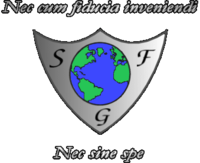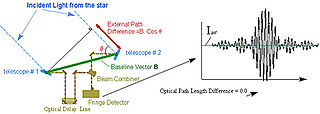
Astrometry is a branch of astronomy that involves precise measurements of the positions and movements of stars and other celestial bodies. It provides the kinematics and physical origin of the Solar System and this galaxy, the Milky Way.
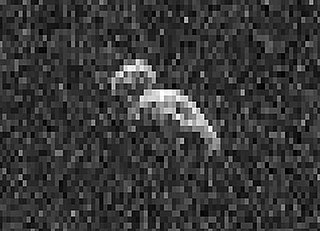
A near-Earth object (NEO) is any small Solar System body whose orbit brings it into proximity with Earth. By convention, a Solar System body is a NEO if its closest approach to the Sun (perihelion) is less than 1.3 astronomical units (AU). If a NEO's orbit crosses the Earth's orbit, and the object is larger than 140 meters (460 ft) across, it is considered a potentially hazardous object (PHO). Most known PHOs and NEOs are asteroids, but a small fraction are comets.

Asteroid impact avoidance comprises the methods by which near-Earth objects (NEO) on a potential collision course with Earth could be diverted away, preventing destructive impact events. An impact by a sufficiently large asteroid or other NEOs would cause, depending on its impact location, massive tsunamis or multiple firestorms, and an impact winter caused by the sunlight-blocking effect of large quantities of pulverized rock dust and other debris placed into the stratosphere. A collision 66 million years ago between the Earth and an object approximately 10 kilometres wide is thought to have produced the Chicxulub crater and triggered the Cretaceous–Paleogene extinction event that is understood by the scientific community to have caused the extinction of all non-avian dinosaurs.

The term Spaceguard loosely refers to a number of efforts to discover, catalogue, and study near-Earth objects (NEO), especially those that may impact Earth.

The B612 Foundation is a private nonprofit foundation headquartered in Mill Valley, California, United States, dedicated to planetary science and planetary defense against asteroids and other near-Earth object (NEO) impacts. It is led mainly by scientists, former astronauts and engineers from the Institute for Advanced Study, Southwest Research Institute, Stanford University, NASA and the space industry.
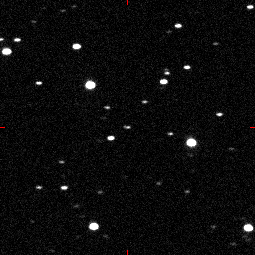
2004 FH is a micro-asteroid and near-Earth object of the Aten group, approximately 30 meters in diameter, that passed just 43,000 km (27,000 mi) above the Earth's surface on 18 March 2004, at 22:08 UTC. It was the 11th closest approach to Earth recorded as of 21 November 2008. The asteroid was first observed on 16 March 2004, by astronomers of the Lincoln Near-Earth Asteroid Research at the Lincoln Laboratory's Experimental Test Site near Socorro, New Mexico.
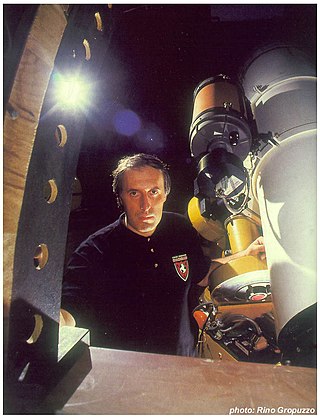
Korado Korlević is a Croatian teacher and prolific amateur astronomer, who ranks among the world's top 20 discoverers of minor planets. As of 2016, he is credited by the Minor Planet Center with the discovery of 1162 numbered minor planets he made at Višnjan Observatory during 1996–2001. In addition, he is credited with the co-discovery of another 132 minor planets. His discoveries include the slowly-rotating outer main-belt asteroid 10415 Mali Lošinj, and 10645 Brač, a member of the Eunomia family of asteroids. He has also discovered two comets, namely 183P/Korlević-Jurić and 203P/Korlević.
Yoshiaki Oshima is a Japanese astronomer at Gekko Observatory and prolific discoverer of 61 asteroids as credited by the Minor Planet Center, and include the binary asteroid 4383 Suruga, the potentially hazardous object (7753) 1988 XB and the Jupiter trojan 4715 Medesicaste.
The Uppsala–DLR Asteroid Survey is an astronomical survey, dedicated for the search and follow–up characterization of asteroids and comets. UDAS puts a special emphasis on near-Earth objects (NEOs) in co-operation and support of global efforts in NEO-research, initiated by the Working Group on Near-Earth Objects of the International Astronomical Union (IAU), and the Spaceguard Foundation. UDAS began regular observations in September 1999, with some test runs during 1998. Discoveries of NEOs are reported to the Minor Planet Center (MPC).
NEODyS is an Italian service that provides information on near-Earth objects with a Web-based interface. It is based on a continually and (almost) automatically maintained database of near earth asteroid orbits. This site provides a number of services to the NEO community. The main service is an impact monitoring system (CLOMON2) of all near-Earth asteroids covering a period until the year 2100.

International Ultraviolet Explorer, was the first space observatory primarily designed to take ultraviolet (UV) electromagnetic spectrum. The satellite was a collaborative project between NASA, the United Kingdom's Science and Engineering Research Council and the European Space Agency (ESA), formerly European Space Research Organisation (ESRO). The mission was first proposed in early 1964, by a group of scientists in the United Kingdom, and was launched on 26 January 1978 aboard a NASA Thor-Delta 2914 launch vehicle. The mission lifetime was initially set for 3 years, but in the end it lasted 18 years, with the satellite being shut down in 1996. The switch-off occurred for financial reasons, while the telescope was still functioning at near original efficiency.
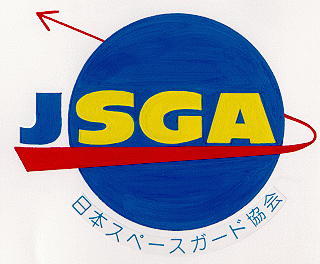
The Japan Spaceguard Association is a not-for-profit organization based in Tokyo, Japan. Its formal status under the Japanese law is Specified Nonprofit Corporation (特定非営利活動法人).

The CINEOS program, started in 2001, is dedicated to the discovery and follow-up of near-Earth objects (NEOs), namely asteroids and comets which periodically approach or intersect the Earth's orbit. In particular CINEOS is addressed to the discovery of Atens and Interior-Earth Objects (IEOs) by extending survey coverage at small solar elongations, and to the discovery of the other kind of NEOs by observing with longer exposures in the opposition region.

The Bisei Spaceguard Center (BSGC) is an astronomical observatory located at Bisei-chō, Okayama, Japan. The facility was constructed during 1999–2000, where it since conducts the Bisei Asteroid Tracking Telescope for Rapid Survey or BATTeRS (バッターズ), an astronomical survey that solely tracks asteroids and space debris. BATTeRS has discovered numerous minor planets and the periodic, Halley-type comet and near-Earth object C/2001 W2 (BATTERS).
Germano D'Abramo is an Italian mathematician, physicist and discoverer of minor planets.

The Sentinel Space Telescope was a space observatory to be developed by Ball Aerospace & Technologies for the B612 Foundation. The B612 Foundation is dedicated to protecting the Earth from dangerous asteroid strikes and Sentinel was to be the Foundation's first spacecraft tangibly to address that mission.
The Space Safety Programme, formerly the Space Situational Awareness (SSA) programme, is the European Space Agency's (ESA) initiative to monitor hazards from space, determine their risk, make this data available to the appropriate authorities and where possible, mitigate the threat.
Marco Micheli is an Italian astronomer and a discoverer of minor planets. He is a researcher at the Centre for Earth Observation of ESA's Space Situational Awareness Programme in Italy.

2020 BX12 is a sub-kilometer binary asteroid, classified as a near-Earth asteroid and potentially hazardous object of the Apollo group. It was discovered on 27 January 2020 by the Asteroid Terrestrial-impact Last Alert System survey at the Mauna Loa Observatory during its approach to Earth of 0.02915 AU (4.361 million km; 11.34 LD). Radar observations of the asteroid were carried out by the Arecibo Observatory on 4 February 2020, revealing a natural satellite orbiting 360 m (1,180 ft) from the primary body.
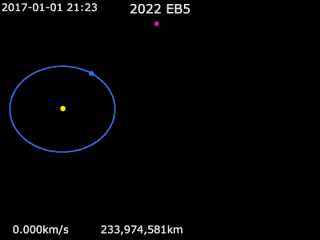
2022 EB5 was a small, two-metre Apollo near-Earth asteroid that disintegrated in Earth's atmosphere at 21:22 UTC on 11 March 2022, over the Arctic Ocean southwest of the Norwegian island Jan Mayen. With an atmospheric entry speed of 18 km/s (11 mi/s), the asteroid's impact generated a 4-kiloton-equivalent fireball that was detected by infrasound from Greenland and Norway. A bright flash possibly associated with the event was reported by observers from Northern Iceland.
